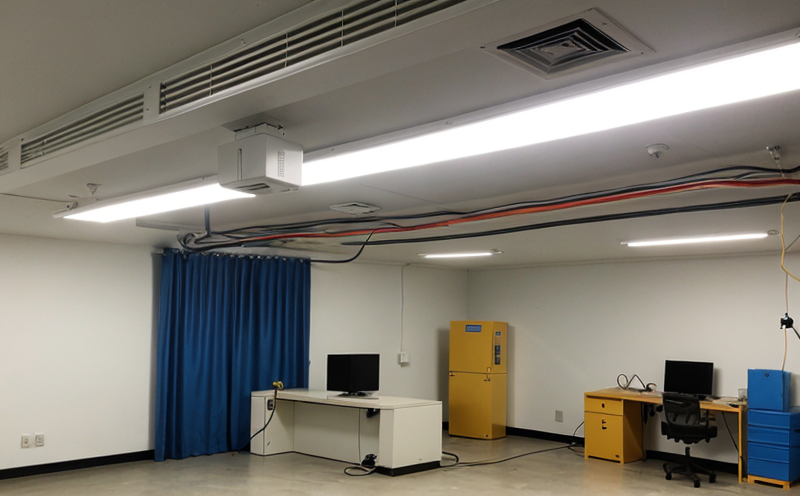ISO 7010 Graphical Symbols for Safety Signs
The ISO 7010 standard specifies the graphic symbols that are used in safety signs to convey information about hazards, instructions, warnings, and other essential safety messages. In the building & infrastructure testing sector, compliance with this standard is crucial when ensuring the safety of both construction workers and end-users within buildings.
The use of standardized graphical symbols ensures consistency across different languages and cultures, making it easier for people to recognize and understand safety signs quickly and accurately. This is particularly important in sectors like building & infrastructure where multiple languages may be spoken and cultural nuances can affect the interpretation of safety messages.
ISO 7010 also addresses accessibility concerns by providing symbols that are not only visually recognizable but also compatible with assistive technologies, such as Braille systems or audio descriptions. This ensures that all individuals, regardless of their abilities, can understand critical safety information.
The standard covers a wide range of hazards and conditions relevant to building & infrastructure projects. For instance, it includes symbols for electrical hazards, fire risks, hazardous materials, and safe work practices. These symbols are not only used in construction zones but also in maintenance areas and operational facilities where ongoing safety is paramount.
One critical aspect of ISO 7010 testing involves verifying that the graphical symbols are correctly applied to signs. This includes checking the size, color, and placement of the symbols to ensure they meet the specified standards. The testing process may involve comparing actual signs against a reference set or using specialized equipment to measure compliance with specific criteria.
Another important element is ensuring that the symbols are legible from a safe distance under various environmental conditions such as sunlight, rain, and humidity. This requires thorough testing in controlled environments simulating real-world scenarios where the safety of workers and users could be at risk.
The process of testing ISO 7010 compliance also involves reviewing documentation provided by contractors or suppliers to ensure that they have adhered to the standard during production or installation. This includes checking for any modifications made to the symbols, which must remain consistent with the original design as per the standard.
Understanding and implementing ISO 7010 is essential for maintaining high standards of safety in building & infrastructure projects. By adhering to these guidelines, organizations can help prevent accidents, reduce liability risks, and foster a culture of safety throughout their operations.
Why It Matters
The importance of ISO 7010 cannot be overstated, especially in sectors like building & infrastructure where the stakes are high. Proper use of graphical symbols ensures that critical safety information is conveyed clearly and consistently, reducing the risk of accidents and injuries.
- Enhanced worker safety
- Improved compliance with international standards
- Increased awareness among users and visitors to buildings
- Reduced liability risks for organizations
- Easier maintenance and updates of signs
- Ensures consistency across different languages and cultures
- Suitable for use in diverse environmental conditions
In a world where communication barriers can lead to misunderstandings, ISO 7010 provides a universal language that transcends these challenges. It allows for clear, unambiguous communication of safety messages, which is vital in the fast-paced environment of building & infrastructure projects.
By adhering to this standard, organizations demonstrate their commitment to excellence and responsibility. This not only protects employees but also enhances the reputation of the company by showing a proactive approach to safety management.
Applied Standards
| Standard Number | Description |
|---|---|
| ISO 7010:2007 | Specifies the graphic symbols for safety signs for use on or in workplaces. |
| EN ISO 7010:2015 | European equivalent of ISO 7010, ensuring compatibility with European regulations and directives. |
| ASTM E364-18 | American standard that aligns closely with ISO 7010 for safety sign requirements. |
| IEC 62762:2015 | Incorporates the graphical symbols used in electrical equipment and systems, which are critical components of building & infrastructure projects. |
| Standard Number | Description |
|---|---|
| ISO 4126:2018 | Provides guidelines for the design and use of safety signs in general. |
| ASTM F1353-19 | Details the specifications for the production and application of safety signs, including those compliant with ISO 7010. |
| EN 4126:2018 | Serves as a European counterpart to ISO 4126, ensuring harmonization across different regions. |
| IEC 62471-3:2015 | Pertains specifically to the safety of lighting equipment and systems, which is integral to building & infrastructure testing. |
Benefits
- Enhanced Safety: Clear and consistent safety signs reduce the risk of accidents by ensuring that workers and users understand potential hazards immediately.
- Compliance: Adherence to ISO 7010 ensures compliance with international standards, reducing legal risks for organizations.
- Improved Communication: Universal symbols facilitate effective communication across different languages and cultures.
- Increased Efficiency: Standardized signs are easier to maintain and update, saving time and resources.
- Better User Experience: Legible and clear safety signs improve the overall experience for visitors and users of buildings.
- Environmental Considerations: The standard also takes into account environmental factors that can affect visibility and readability of signs.
The benefits extend beyond just the immediate environment. By ensuring compliance with ISO 7010, organizations contribute to a safer working environment, which in turn enhances productivity and reduces downtime due to accidents or injuries.
Furthermore, compliance with these standards can be an advantage when bidding for contracts, as it demonstrates a commitment to safety and quality that is valued by clients and stakeholders alike. This can lead to increased business opportunities and improved reputation within the industry.





